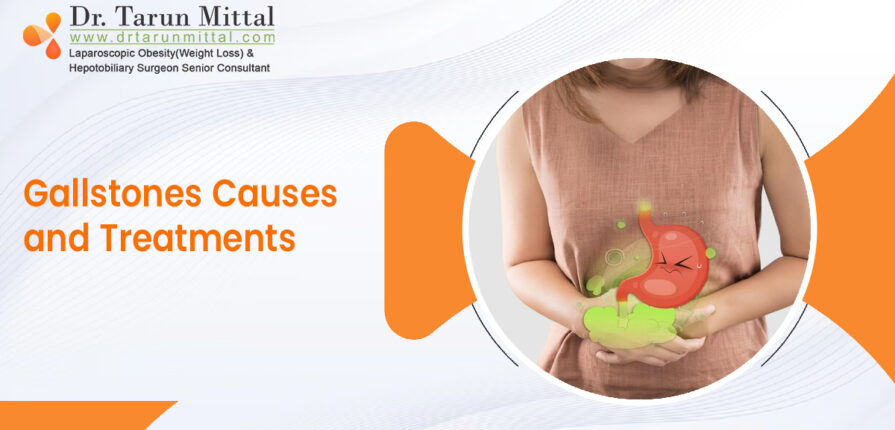Gallstones are a common digestive problem, affecting millions of people worldwide. They form when substances in the bile, primarily cholesterol and bilirubin, harden into small, pebble-like substances in the gallbladder, a small organ located just below the liver. Dr Tarun Mittal, a renowned laparoscopic and robotic surgeon provides various treatment options for a variety of gastrointestinal diseases including the Best Gallbladder Removal Surgery in Delhi. In this blog, he educates us about the causes, symptoms, and various treatment options for gallstones, providing a comprehensive understanding of this condition.
What Causes Gallstones?
The exact causes of gallstone formation are not completely understood, but several factors are known to contribute:
- Cholesterol Levels: High levels of cholesterol in bile can lead to the formation of cholesterol gallstones, the most common type.
- Bilirubin Overproduction: Certain conditions like liver cirrhosis and blood disorders cause an excess of bilirubin, which can lead to pigment gallstones.
- Gallbladder Function: If the gallbladder does not empty completely or often enough, bile may become very concentrated, which contributes to gallstone formation.
Risk Factors Include
- Obesity or being overweight
- Eating a high-fat or high-cholesterol diet
- Rapid weight loss
- Diabetes
- Certain medications such as birth control pills
- Family history of gallstones
- Being female and over 40
Symptoms of Gallstones
Gallstones can be asymptomatic, but when symptoms occur, the condition is referred to as gallstone disease or cholelithiasis. Common symptoms include:
- Abdominal ache in the upper right corner that starts suddenly and gets worse quickly
- Back pain between your shoulder blades
- Pain in your right shoulder
- Nausea or vomiting
Diagnosing Gallstones
Diagnosis typically involves a physical examination, assessment of symptoms, and medical imaging:
- Ultrasound: The most common and effective test for detecting gallstones.
- CT Scan: Provides images that can show gallstones or complications such as inflammation.
- Blood Tests: Can indicate infection, jaundice, pancreatitis, or other complications caused by gallstones.
Treatment Options
Treatment is based on how severe and frequent the symptoms are.
- Watchful Waiting: For asymptomatic gallstones, no immediate treatment may be necessary, but regular monitoring is essential.
- Medication: Oral medications can sometimes dissolve cholesterol gallstones, but this method may take years and is not always effective.
- Surgery: The most common and effective treatment for symptomatic gallstones is cholecystectomy, the surgical removal of the gallbladder. This procedure is typically performed laparoscopically, known as a laparoscopic cholecystectomy. Dr Tarun Mittal, the best laparoscopic surgeon in Delhi is renowned for his surgical prowess in providing the Best Gallbladder Removal Surgery in Delhi.
- ERCP (Endoscopic Retrograde Cholangiopancreatography): Used if gallstones are lodged in a bile duct, this procedure involves using an endoscope to remove stones or relieve obstruction in the bile duct.
Lifestyle Changes
In addition to medical treatments, making lifestyle changes can help manage or prevent gallstones. These include:
- Maintaining a healthy weight
- Adopting a balanced diet rich in fibre and low in cholesterol and fat
- Regular physical activity
Conclusion
Gallstones can significantly impact quality of life, but with proper diagnosis and treatment, most people can expect to lead normal, healthy lives post-treatment. If you suspect you have gallstones, consult with a healthcare provider like Dr Mittal to discuss the best treatment options based on your specific condition. Remember, early intervention is key in managing gallstone-related complications effectively.


